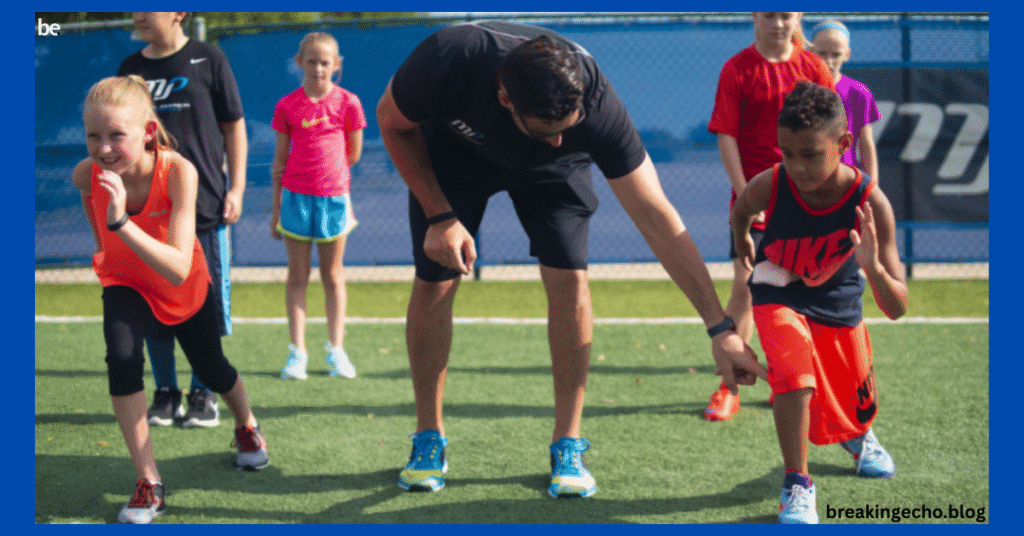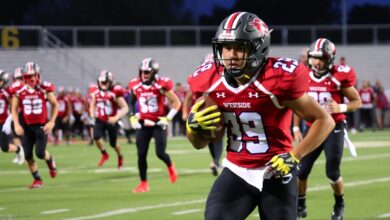Sports Harmonicode: The New Era of Sports Technology and Analytics

Introduction to Sports Harmonicode
Sports Harmonicode In recent years, sports have gone far beyond just raw athletic performance. Today, technology plays a significant role in how athletes train, how teams strategize, and how fans experience games. Among the newer innovations shaping this industry is something known as sports harmonicode. While the term might sound futuristic or even like something out of a sci-fi novel, it’s actually a cutting-edge concept that blends sports performance with advanced coding, analytics, and harmonic patterns.
Sports harmonicode isn’t just another buzzword. It represents a framework where the mathematical harmony of human movement meets digital coding techniques to optimize performance. Think of it as a way of translating the “music” of the human body in motion into data-driven codes that can be analyzed, improved, and applied in real-world sports scenarios. This concept opens doors for better training regimens, injury prevention, and game analysis that feels more holistic than ever before.
The world of sports has always embraced data, whether through statistics, biomechanics, or performance metrics. What sets sports harmonicode apart is the way it looks for patterns and “harmonies” that others might overlook. By identifying hidden relationships between speed, strength, rhythm, and strategy, harmonicode creates a deeper level of understanding, almost like listening to a perfectly tuned orchestra.
The Origins of Sports Harmonicode

While sports harmonicode might sound brand new, its foundation lies in concepts that have existed for decades. Sports science has long explored the relationships between movement and efficiency. Biomechanics, kinesiology, and even psychology have attempted to break down how athletes perform at their best. Harmonicode takes these disciplines and adds a modern coding twist, layering them with algorithms and digital simulations.
The idea of harmony in sports is not accidental. Athletes often speak about being “in the zone,” where every movement feels effortless, precise, and perfectly aligned. Researchers have studied this phenomenon and discovered that successful performance often relies on rhythm and synchronization. By applying harmonic principles, coders and sports scientists found a way to digitize this sense of flow, turning it into a code that can be analyzed and replicated.
From wearable fitness trackers to AI-driven coaching tools, the groundwork for sports harmonicode has already been laid. The rise of machine learning and data analytics has allowed scientists to finally make sense of the massive amounts of data generated during athletic activities. Harmonicode represents the next logical step—a way to unify that data under a common system that values not just numbers, but the harmony behind them.
How Sports Harmonicode Works
To understand how sports harmonicode works, you need to picture a blend of mathematics, coding, and physiology. At its core, harmonicode uses algorithms to detect patterns in movement, strategy, and performance. These patterns are then analyzed for consistency, efficiency, and effectiveness.
For example, take a basketball player practicing free throws. Traditional coaching might rely on repetition, video analysis, and correction of technique. With sports harmonicode, every micro-movement is coded—arm angles, wrist flicks, timing, and even breathing rhythm. Once these data points are captured, they’re analyzed as a “harmonic sequence.” If something falls out of rhythm, it becomes immediately noticeable, and corrective training can bring the player back into harmony.
This system doesn’t just apply to individual sports. In team-based games like soccer or football, harmonicode can analyze how players move together on the field. By mapping out the “flow” of player positions and strategies, coaches can identify when a team is moving in harmony and when disruptions occur. This type of insight can completely transform how strategies are developed and executed.
Applications in Professional Sports
Professional athletes are always looking for that competitive edge, and sports harmonicode provides exactly that. Teams in football, basketball, soccer, and even esports are exploring how harmonic patterns can enhance performance. Instead of focusing only on traditional statistics like goals scored or shots attempted, they’re diving into the rhythm of player movements, decision-making, and teamwork.
Injury prevention is one of the most promising applications. Many injuries occur because of repetitive strain or breakdowns in movement patterns. By analyzing an athlete’s harmonicode, trainers can identify imbalances early on and correct them before they lead to serious injuries. Imagine being able to prevent a season-ending injury simply by spotting a disharmony in how an athlete runs or jumps.
Another powerful application is fan engagement. Broadcasters and sports media companies are starting to explore how harmonicode data can make games more interactive. Fans might soon see visualizations of a player’s rhythm, harmony ratings for teams, or even real-time breakdowns of how a match’s “flow” is evolving. This could make watching sports feel more immersive than ever.
Sports Harmonicode in Training and Development
One of the most exciting aspects of sports harmonicode is its role in athlete development. Young athletes, in particular, can benefit from early exposure to this technology. By coding their movements and identifying strengths and weaknesses, trainers can tailor development programs that feel more natural and personalized.
Training with harmonicode isn’t about forcing athletes into rigid molds. Instead, it helps them find their natural rhythm and enhance it. For instance, a sprinter might have a slightly unconventional stride that traditional coaching would try to correct. But harmonicode might reveal that this stride actually creates a harmonic pattern that works to their advantage. By recognizing and reinforcing these unique harmonies, training becomes more effective and less restrictive.
Sports academies and universities are already beginning to explore these ideas. Imagine a future where student athletes graduate not only with physical skills but with a complete harmonicode profile that helps them transition seamlessly into professional sports. This kind of data-driven approach could completely revolutionize how talent is scouted and nurtured.
Challenges and Limitations of Sports Harmonicode
As revolutionary as sports harmonicode sounds, it’s not without challenges. One of the biggest hurdles is accessibility. Advanced coding systems and analytics tools can be expensive, which means that smaller teams or less-funded sports programs may struggle to adopt them.
Another limitation is interpretation. While data might reveal harmonic patterns, not every coach or athlete knows how to translate that information into actionable changes. This creates a need for specialized professionals—people who not only understand coding but also the dynamics of sports performance. Bridging this gap will be essential if harmonicode is to become mainstream.
There’s also the issue of over-reliance on technology. Sports are, at their heart, a human endeavor filled with unpredictability and emotion. If athletes and coaches start relying too heavily on harmonicode, they may risk losing the creative and instinctual aspects that make sports so thrilling. Striking a balance between technology and intuition will be critical for long-term success.
The Future of Sports Harmonicode
Looking ahead, sports harmonicode has the potential to reshape the industry in ways we’re only beginning to understand. With the rise of AI, augmented reality, and wearable technology, athletes could one day train in environments that provide real-time harmonic feedback. Imagine wearing a suit that vibrates gently when your movements fall out of rhythm, or a VR simulation that helps teams practice harmony without ever stepping onto the field.
Beyond athletics, harmonicode may even influence other areas of life. Corporate teams, dance groups, and even military training could benefit from the principles of harmony and rhythm in performance. The concept of translating human actions into harmonic codes could expand far beyond sports, turning it into a universal performance tool.
As more data is gathered and algorithms improve, the accuracy and usefulness of sports harmonicode will only grow. The next generation of athletes might not just rely on natural talent and hard work but also on the harmony of their coded movements, creating a future where sports feel more like a symphony than a competition.
Conclusion
Sports harmonicode represents an exciting intersection between technology, performance, and human potential. By looking at sports through the lens of harmony and coding, it offers new ways to train, prevent injuries, and understand the rhythm of competition. While challenges remain, its potential applications in both professional and amateur sports are limitless.
In a world where every second counts and every movement matters, sports harmonicode provides the missing link between raw athleticism and digital precision. It’s not just about winning—it’s about achieving harmony, rhythm, and balance in motion. The athletes and teams who embrace this innovation early will likely set the stage for a new era of sporting excellence, where performance isn’t just measured in points and stats but in the beautiful flow of harmony itself.



